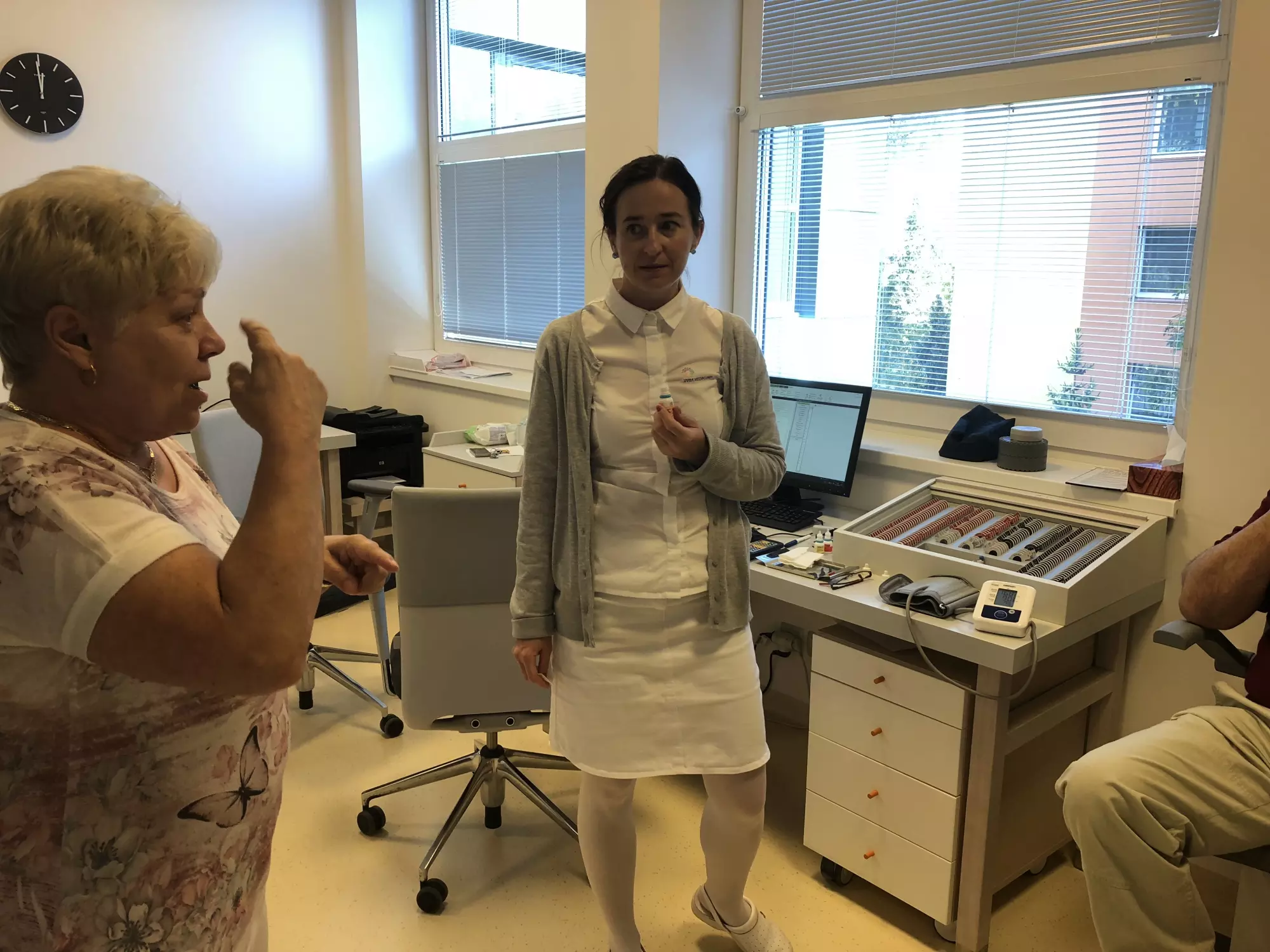Narodil sa s handicapom kedy jeho jediný komunikačný prostriedok sú ruky. Človek by si povedal, že stačí všetko spísať do mailu a pacient si to jednoducho prečíta. Nie je tomu ale celkom tak. U hluchonemých a nedoslýchavých pacientov nemusí byť problém s prečítaním písaného slova, porozumieť mu však už problém môže byť. A tu sa vynára otázka, ako ďalej.
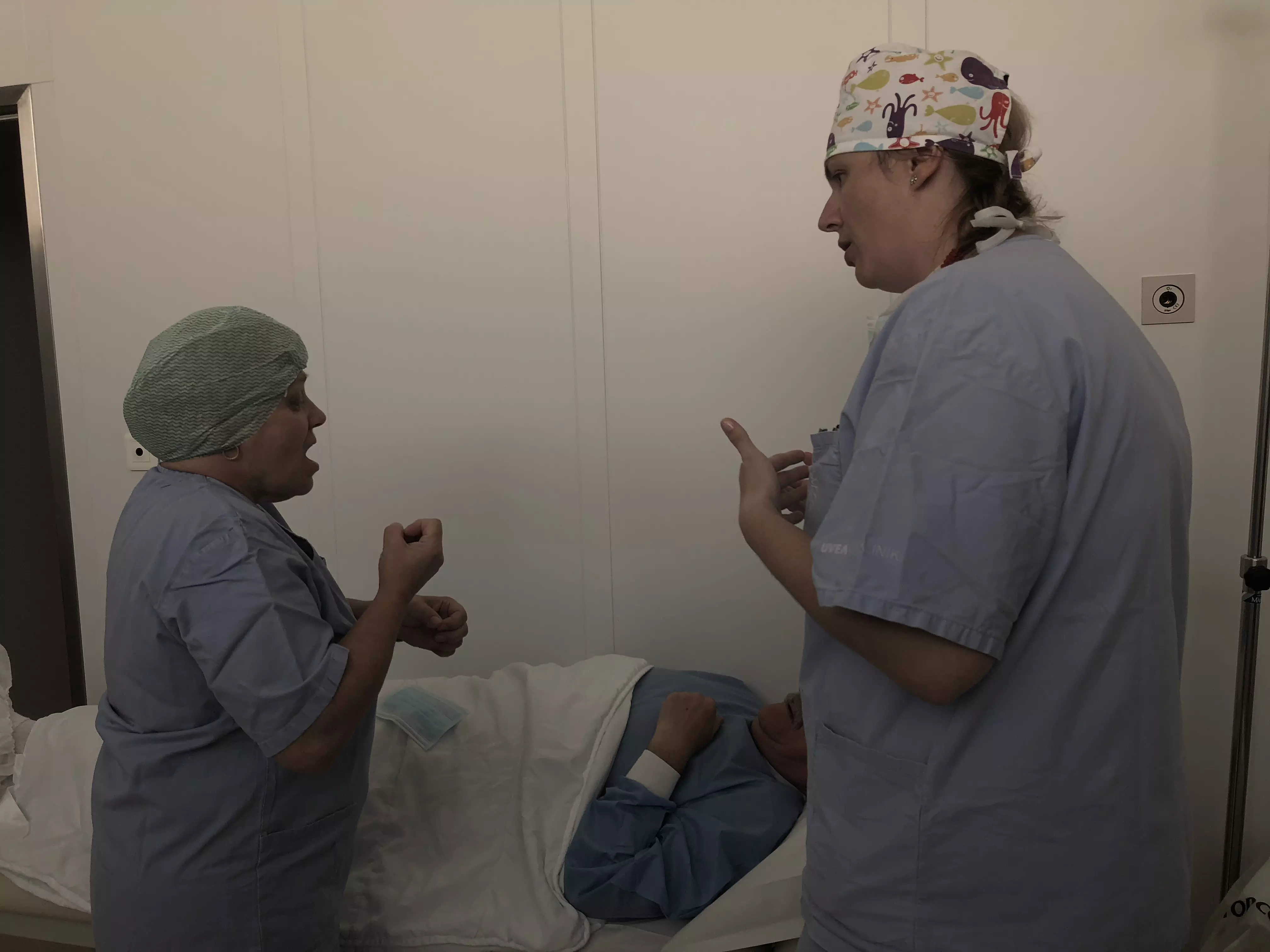
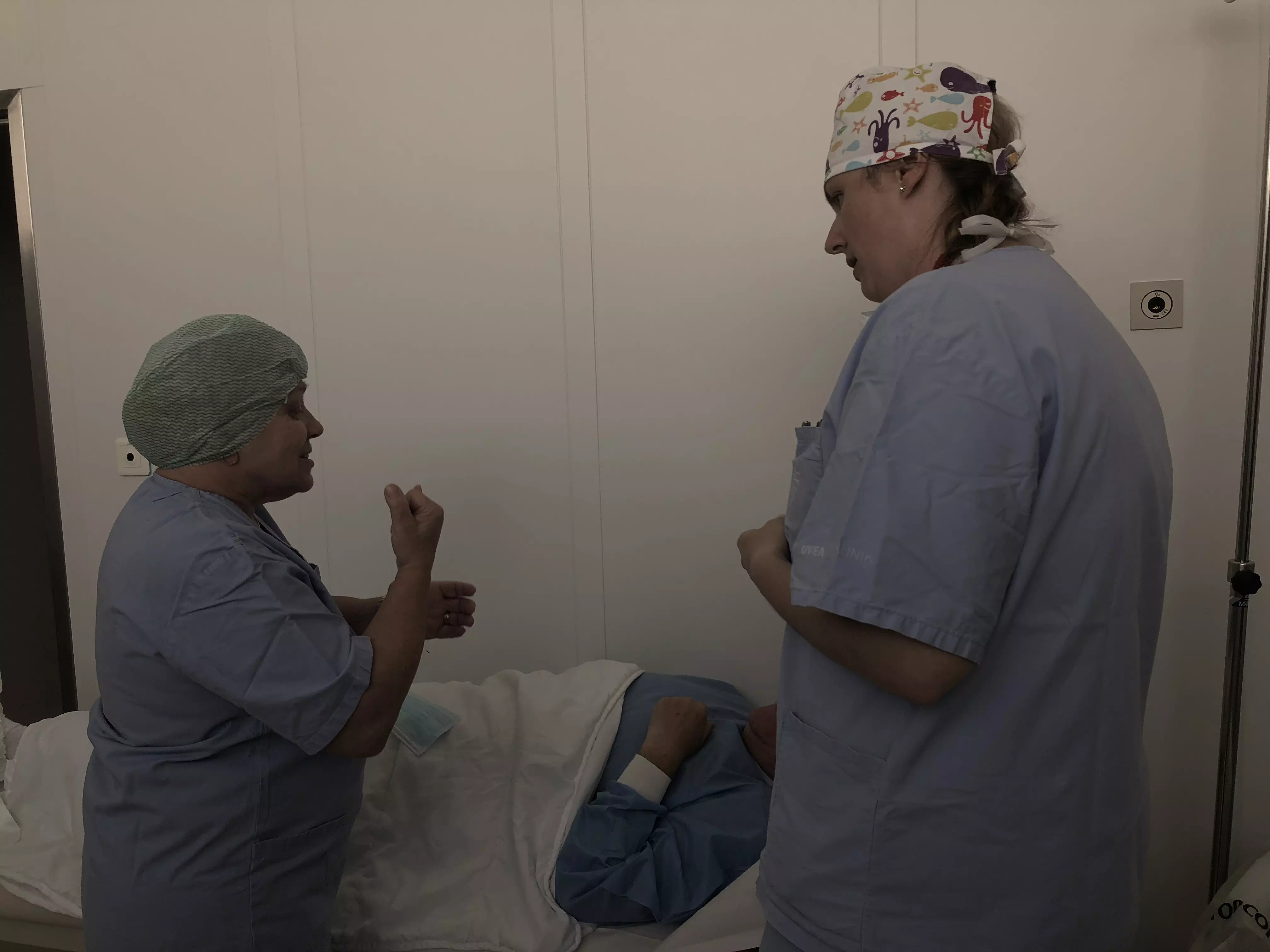
Príprava na operáciu v posunkovej reči
„Približne 30 až 40 % našich operovaných pacientov má okrem problému s videním aj výrazne zhoršený sluch. Preto keď k nám prišiel tento pacient, necítil som žiadne obavy. Počas svojej praxe som zoperoval už viacerých hluchých a hluchonemých pacientov a som zvyknutý na rôzne prekvapenia. Pravdou však je, že takéto prípady nebývajú každodennou súčasťou našej práce, a preto nepopieram, že mohol byť pre mojich kolegov výnimočný,“ hovorí MUDr. Peter Žiak, PhD.
Teší nás, že aj v tejto oblasti sme pripravení na takéto a podobné situácie. V tomto a v každom inom prípade dôležitú úlohu zohrávajú aj naše koordinátorky zdravotnej starostlivosti, ktoré sprevádzajú pacienta celým procesom od objednania sa na vyšetrenie až po poslednú kontrolu po operácii. Tak tomu bolo i teraz.
Vyšetrenie zraku hluchonemého pacienta prebehlo bez komplikácií. Väčšina meraní na našej očnej klinike sa vykonáva na automatických prístrojoch, preto získanie potrebných výsledkov nebýva problematické. Pár dní po vstupnom vyšetrení prišlo na informovanie pacienta o zákroku. „Po prvýkrát som sa stretla v trojici s týmto pacientom a tlmočníčkou, ktorá mu prekladala do posunkovej reči. Do najmenších detailov sme prechádzali výsledky jeho vyšetrení, prípravu na operáciu a bolo pre mňa ťažké pozorovať, ako sa pacient vyrovnáva so svojimi emóciami. Odhliadnuc od toho, že vlastne ani nevie, do čoho ide, je v stávke ďalší z jeho zmyslov – zrak,“ opisuje koordinátorka Damiána a dodáva: „Takéto vysvetľovanie a informovanie pacienta zaberie štandardne 10 až 15 minút. V našom prípade išlo o približne hodinu, pretože sme si chceli byť naozaj istí, že pacient všetkému porozumel. Som však rada, že nám s touto neľahkou úlohou pomohla tlmočníčka ktorá je častokrát chýbajúci a ťažko dostupný článok v živote takto hendikepovaného pacienta.
„Skoro vždy je na samotnom pacientovi, či požiada o pomoc alebo bude v podobných situáciách tápať sám.“
Operácia v tichu
„Prišiel deň zákroku. Žiadne špeciálne prípravy sa nekonali, len nás bolo na operačnej sále o dvoch viac, teda o mňa a tlmočníčku. S pacientom sme si niekoľkokrát prešli celý postup, no najmä sme si zvolili signál pre prípad núdze. Iný pacient by na sále jednoducho povedal, že si potrebuje kýchnuť alebo zakašlať, no v tomto prípade to bolo iné,“ vysvetľuje naša koordinátorka Damiána.
„Pred operáciou videl pacient na ľavé oko na 40 %. Sivý zákal sme mu zoperovali štandardne s implantáciou umelej šošovky, vďaka čomu získal ďalších 40 % normy. Išlo o úplne bežný postup s tým rozdielom, že na operačnej sále bola prítomná aj tlmočníka,“ hovorí MUDr. Žiak.
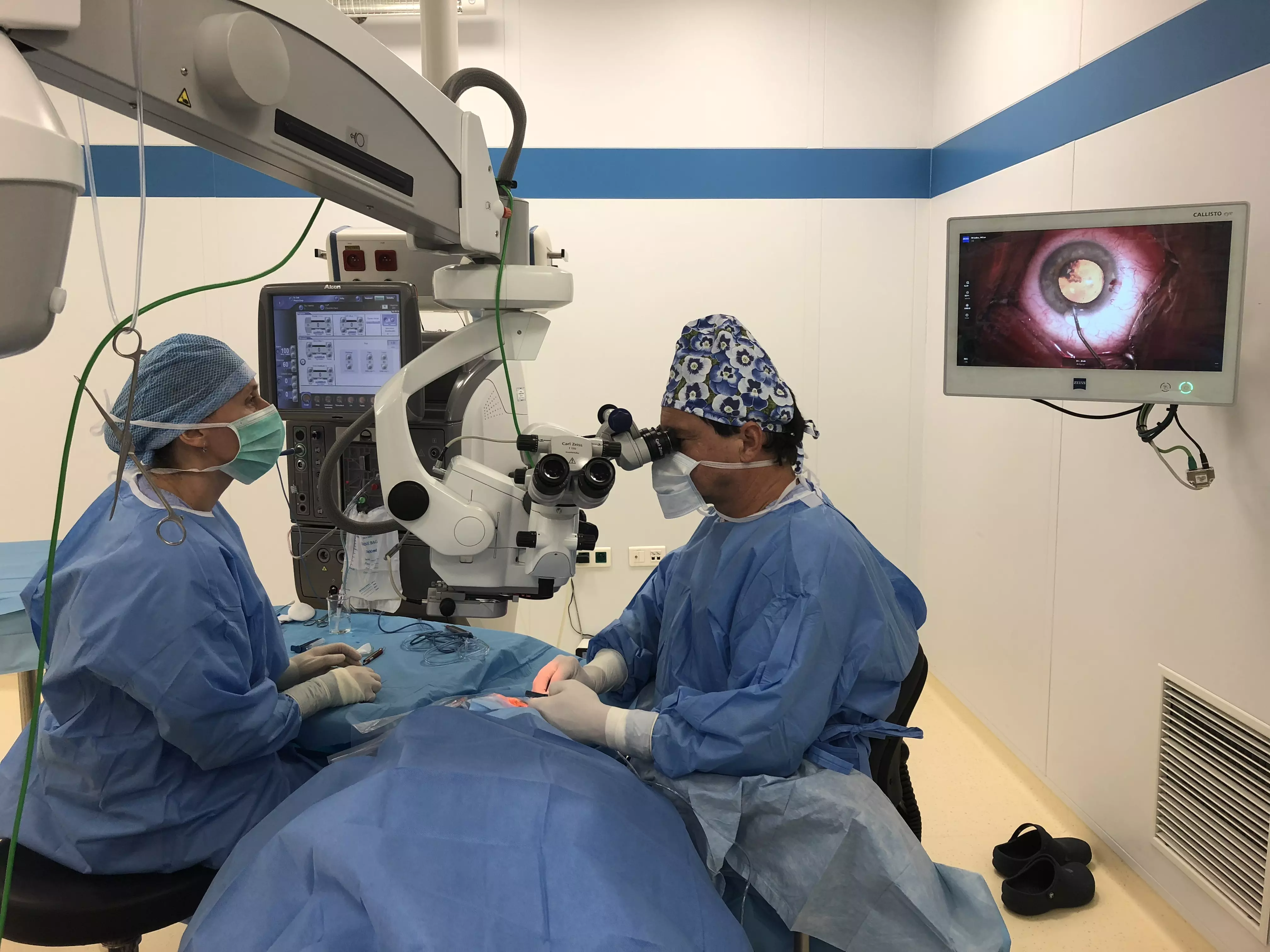
Obrovská dôvera pacienta
Je ťažké predstaviť si tú situáciu, keď ležíte na operačnom stole a nič nepočujete. Netušíte, čo sa okolo vás deje, či je všetko v poriadku alebo sa počas operácie spustila vlna možných komplikácií. Napriek tomu pokojne ležíte a čakáte, kým vám niekto po asi 20 minútach s úsmevom odkryje tvár, čím vám naznačí, že operácia dopadla výborne a môžete ísť domov. A práve prípad tohto pacienta ukázal nášmu personálu, aká dôležitá je dôvera medzi lekárom a pacientom. „Aj napriek tomu, že nešlo o extrémne náročnú operáciu, pre mnohých z nás, ktorí sme sa podieľali na jej príprave, samotnom zákroku a pooperačných kontrolách, bola predsa len unikátnou,“ uzatvára Damiána.
Ak si prajete objednať sa na vyšetrenie, stačí, keď vyplníte tento krátky formulár a my vás budeme kontaktovať.






